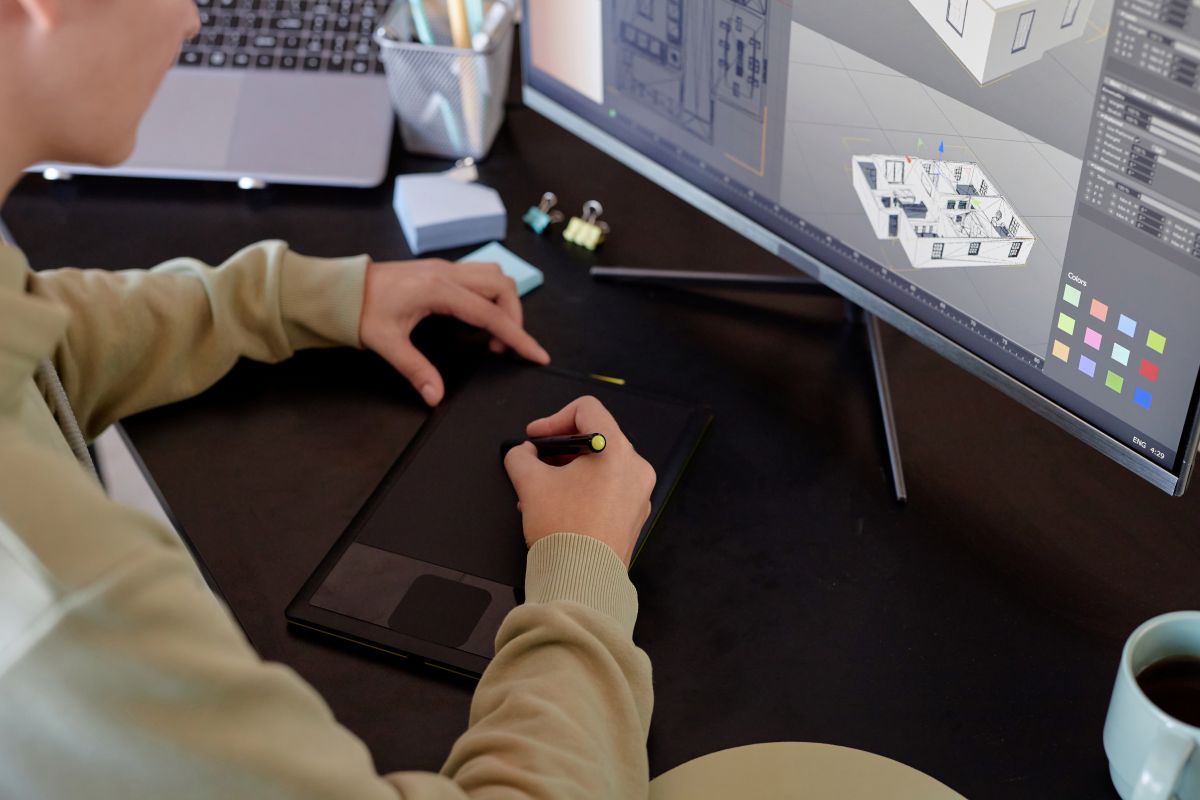
Animation Studios in South Africa: Natural Movement
Every animated movement, from a nod to a dance step, owes its believability to more than just its key poses. There is often a small supporting act making the motion feel convincing, and that is where Follow Through and Overlapping Action step in. These animation principles are not attention-grabbing. They are not dramatic. But they are what give movement a sense of realism and continuity. These concepts are part of the 12 principles of animation, first introduced by Frank Thomas and Ollie Johnston in The Illusion of Life. While the animation world has changed dramatically since 1981, this principle has remained just as important, especially in the context of motion used in corporate, marketing, and training content. For animation studios in South Africa, this principle remains a go-to for elevating corporate animation without needing a single word of dialogue. Instead of convincing viewers that a character is realistic, it simply shows them. Let us explore how.
What It Means, in Clear Terms
Let’s get definitions out of the way before things start moving.
Follow Through refers to the continuation of motion even after the main action has stopped. Think of a character’s ponytail swinging forward when they suddenly stop walking. The motion keeps going until gravity and friction bring it to rest.
Overlapping Action is slightly different, it means that different parts of the body (or object) move at slightly different times. For example, when a person turns around, their hips may initiate the twist, followed by the chest, shoulders, and finally the head.
These are not decorative tricks or add-ons. They reflect how movement actually works. Bodies, clothing, and accessories all have weight, drag, and momentum. When an animation reflects this, it feels more believable, whether it is a 3D product demo or a 2D character in a staff training video.
There Is a Bit of Physics Behind It
This principle leans heavily on real-world physics, especially inertia and drag. Isaac Newton had a few things to say about this, with his law about objects remaining in motion unless acted upon by another force. When a character comes to a stop, their coat, tie, or ponytail keeps moving for a moment because that is what real things do.
Over the years, this principle has been studied and tested by animators from Disney to modern studios working in whiteboard, motion graphics, and CGI formats. It was originally used to prevent animated characters from looking stiff. Now, it also helps avoid something even worse, looking automated or lifeless.
In many ways, this principle is about respecting gravity and momentum, even in a stylised world. Animation studios in South Africa that work across a wide range of styles, from 2D to CGI, use this principle to bring realism and rhythm to movement in scenes that otherwise would feel flat.
Movement Is Made Up of Layers
One of the reasons follow through and overlapping action matter so much is that no one, and no thing, moves all at once. Movement flows through the body in a sequence.
For instance:
- Loose items like hair, coats, or earpieces always trail slightly behind the main motion. These are perfect places to show follow through.
- Body segments do not turn at once. The hips lead, the torso follows, then the shoulders and head. This is where overlapping action comes in.
- Weight and material affect timing. A scarf made of silk moves differently than a utility belt. Knowing this helps determine how much drag and follow through to show.
This is not just about making a character move “better.” It is about making the viewer forget they are watching animation. Animation studios in South Africa apply these details carefully, often combining automated simulations for hair or cloth with custom keyframes to finesse the timing.
A Practical Role in Corporate Animation
At first glance, this might seem like a principle only relevant to character animation in animated films. But corporate animation? Absolutely.
In corporate or training videos, these small movements often do the heavy lifting. Think of a spokesperson avatar gesturing during a health and safety explainer. If their tie lags slightly behind their shoulder turn, it makes the motion feel smooth and grounded. This helps hold the viewer’s attention a little longer and makes the content easier to absorb.
It also helps with transitions. For example, when a data panel swoops into the screen during a marketing video, overlapping motion helps it feel natural rather than abrupt. It suggests that the motion started somewhere and might continue past the frame, adding rhythm and continuity to an otherwise simple scene.
Many animation studios in South Africa use this principle in infographics and motion graphics to add flow to elements like charts, icons, or animated text. It helps everything feel like it belongs together, moving as part of a whole, rather than in isolated chunks.
Different Animation Styles, Same Principle
No matter the format, this principle finds a place.
- 2D and whiteboard animations imply motion with trailing lines or secondary shapes. Overlapping action can be used even in very stylised designs.
- Motion graphics benefit when transitions include easing and follow through. For instance, a bar graph does not just rise, it may slightly overshoot, then settle.
- 3D and CGI allow more complex simulations, such as cloth and hair dynamics. But even here, manual tweaking ensures secondary motion looks intentional and not overblown.
Animation studios in South Africa with multi-format expertise often take hybrid approaches. A character might be rigged in 3D but composited in a 2D layout, allowing for follow through in both physical and graphical elements.
It Is Also About Process, Not Just Theory
Integrating this principle does not happen by accident. It is part of the workflow.
- Reference footage is used to study how objects trail behind in motion. Even simple things like recording someone turning in a chair can offer insights.
- Secondary passes are often done after the main animation is blocked out. These fine-tune timing, arcs, and easing.
- Timing adjustments help to exaggerate or restrain the movement depending on context. A medical training animation might need subtler motion than a brand video.
Studios use this principle not just to fill in detail, but to keep animation feeling smooth and consistent. Overlapping action helps connect scenes and keep them from feeling mechanical.
Common Missteps to Avoid
As with any principle, things can go wrong. Here are a few common issues that experienced animation studios in South Africa know to look out for:
- Too much movement can feel like a distraction. If every part of a character keeps wiggling after they stop moving, it looks odd, not realistic.
- Wrong material reaction makes the animation feel off. Heavy coats should drag more than feather-light scarves.
- Poor timing can mean the follow through feels like a mistake, rather than part of the motion.
Even in infographics or UI animation, this applies. Overlapping motion should help guide the viewer’s eye, not pull it in three directions at once.
Thinking About Results
There is also a practical side to this principle. Smooth, believable movement helps with:
- Viewer retention: people are less likely to click away from motion that flows naturally.
- Focus: overlapping action can direct attention where it is needed, especially in data-dense or instruction-heavy scenes.
While no one clicks on a video because it has overlapping action, viewers often stay a few seconds longer because of it. That might be all a brand or trainer needs.
The Subtle Principle That Makes a Difference
Follow Through and Overlapping Action may never be the most talked-about animation principles, but they play a critical role in helping things move like they should. For clients commissioning animation for corporate training, marketing, or internal communication, this principle often separates the animations that “work” from those that just play.
Animation studios in South Africa use this principle across all animation types, not to show off technique, but to ensure that motion supports the message. It is not just about movement. It is about movement that makes sense. It might be a small swing of a lanyard. It might be the easing of a notification bubble. But when done well, viewers believe in what they see. That is where this principle truly earns its place.
Subtle details make a big difference, in animation and in choosing the right studio. If you are looking for animation that reflects careful timing, momentum, and follow-through, Sound Idea Digital knows how to keep things moving smoothly. Let’s talk about your next project.
We are a full-service Web Development and Content Production Agency in Gauteng specialising in Video Production, Animation, eLearning Content Development, Learning Management Systems, and Content Production.
Contact us for a quote. | enquiries@soundidea.co.za | https://www.soundideavideoproduction.co.za| +27 82 491 5824 |

